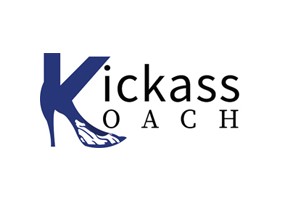Listen to Other Episodes of the Kickass Koach –
ImpactBank’s – the Kickass Koach is on i-Tunes AND you can always find the most recent episodes on ImpactBank’s main website page with a link to iTunes to make it easier for you to subscribe. Of course the podcast link on the website navigation bar also takes you to all episodes.
ImpactBank’s The Kickass Koach podcast supports senior leaders who want to quickly master the art and practice of leadership while stepping into a new assignment. When you were promoted into a senior position, if you’re like most people, you were immediately excited b y the opportunity to really make a difference. You also soon realized the immense, even daunting, challenge ahead of you.
y the opportunity to really make a difference. You also soon realized the immense, even daunting, challenge ahead of you.
You quickly had feelings of being lost, overwhelmed and very alone. It is completely understandable – you need to find your leadership rhythm. We help you find your leadership presence – one that will both command a room and warm hearts so people want to follow you and exceed your expectations – then you will know what it feels like to really make an impact.
ImpactBank’s “ON YOUR MARK…” 3 month program focuses exclusively on the first 90-180 days in a new assignment to give you a positive start. ImpactBank’s “THE IMPACT BUMP” 18 month program is for leaders who want to take the ‘kick-start” to a whole new level. We exclusively work with leaders in their first two years in role so we bring resources designed specifically to support your thinking and development.
This Week’s Additional Recommendations:
Episode 38: The opening episode for this series where I discuss why this information is so important for the senior leader. Episode 39 explores Confirmation Bias. Episode 40 digs into Anchoring Bias
Episode: 21: From the Kickass Koach archives- The second episode in the series on Leadership and the Brain. How social rejection in the workplace will trigger a response you don’t want.
Active Series- BIAS
By now you see I change up my definition for BIAS. It’s my way of not getting too comfortable or stuck in the definition – one of my tricks to keep noticing when they inflict themselves on me. It seems to work for me WHEN I remember to do it – that’s the problem with that lazy brain that likes to stay in a rut.
I invite you to look for tricks to catch your biases when they strike.
If you have a reflective system – meditation, yoga, daily walks, journaling, or such – make it a part of your practice.
Definition of BIAS – this week’s iteration
Biases hide behind your inner voices that try to control how you see the world.
THEY ARE the invisible annoying person sitting on your shoulder as you navigate your day –
exerting their influence when you least expect it EVEN when you laugh at them or try to ignore them,
THEY ARE chameleons who shift and change according to what will influence you most that day, pushing you to make quick, efficient judgments and decisions with minimal cognitive effort so your lazy brain can focus elsewhere.
AND AS A RESULT, biases influence you and everyone around you by impacting EVERY decision you make.
In the comment section share a variation of the definition that you think may offer a fun twist.
WHY SHOULD YOU CARE?
Do you want to make a difference? If leadership is your CALLING – you feel COMPELLED to make a difference. You ARE a difference-maker.
Most of my clients are in the non-profit sector so having an impact is what gives you purpose. You care about it more than making money – hence you are willing to give your heart and soul to a purpose.
At ImpactBank, we want to co-create a difference so you can BE the difference-maker – have an impact.
I have spent the vast majority of my career in service to or as a senior leader AND impacting the growth and development of others has always been a passion. I made a conscious decision to return to a “source of joy” that I felt when supporting senior leaders AND I decided to focus my attention in the non-profit sector – healthcare, education, human services and so on because leaders who practice their craft in this sector live for purpose first and it inspires me.
As a senior leader in the non-profit sector you are driven by purpose and you have a mandate to make a difference.
You made a choice to serve in the non-profit sector and with that comes a responsibility. You would never intentionally allow your office/workplace to get mired in destructive politics or the ugly hubris of ego, or the toxic energies of a selfish leader to the extent it was negatively impacting the community you serve.
negatively impacting the community you serve.
As the senior leader you are charged with specific deliverables and hopefully a clear mandate. Your biases and those held by members of your team will likely derail your efforts if you are not vigilant. It’s not easy and it is essential you show yourself and your team some compassion when BIASES raise their ugly head AND you will make a major and positive impact when you start to develop strategies to take away the power the biases have. It is a clear path once you see it – never an easy one.
This Week’s BIAS
Illusion of Control: the tendency for people to overestimate their ability to control events; for example, it occurs when someone feels a sense of control over outcomes that they demonstrably do not influence.
This bias will result in you using directive approaches and mistakenly believe people will fall into line and you will be surprised when it just doesn’t happen.
A few questions to ask yourself:
- Think of a time when things weren’t going well. You laid out the expectations. You were clear about WHY it was essential for everyone to follow protocol. AND you hear yourself asking: “Why don’t they seem to care as much as I do?” What answer did you have for yourself?
 How is your team hearing your directives? What if you listened more than you talked? What would you learn about what they need?
How is your team hearing your directives? What if you listened more than you talked? What would you learn about what they need?- What do you do to engage the team in the thinking process you use to consider your decisions? What if they were more apt to understand and respect your direction when you did? OR what if they had ideas you were missing? What level of support compliance would you realize when all interested parties are part of the thinking BEFORE you make decisions.
- How could you win greater buy-in? What could be different if you entered every conversation expecting and looking for a new perspective, a different idea or answer to a current problem?
- What if you had a filtering mechanism to help you systematically identify limting beliefs and biases that limit your options and create barriers to excellence in your agency or organization?
“Our current problems will not be solved at the level of thinking with which they were created.” A. Einstein
This Week’s Story
When I was the President/CEO of an accredited healthcare post-secondary school the number one thing that kept me up at night was compliance with accreditation requirements. Sometimes the requirements were so vague and the auditors and Commission more vague in their answers to questions it just added to my frustration. I had a competent and caring senior team which helped but there were some areas I knew to be a weakness. NOT THIS.
With the help of the Curriculum Committee and Clinical Committee we had thought through all privacy requirements set by the Accreditation Commission, the governing Ministry and the Privacy Commissioner – we had it covered. We established protocols and I personally engaged the President of the IT Firm we used to set up our protocols on the server. These were regularly reviewed too. SO I didn’t see this coming – I was caught in the illusion of control!
The message came through my Senior Office Administrator (we’ll call her Donna) one day. It didn’t immediately alarm me because I believed we had it covered and the complaint that had be raised couldn’t possibly be accurate. These things nag me though so while I asked Donna to dig into it a bit further but the possibility became like a little pebble that gets caught under the ball of your foot pressing into your skin with every step – I couldn’t concentrate on anything else.
I made a point to talk with the Program Director, Deputy Program Director and Clinical Coordinator to see if they had any insights into how this could have happened – they were as shocked as I was. I decided to join Donna in her office to personally hear some of the conversations she was having with clients to better understand the basis of the complaints. I wasn’t happy about the possibility we hadn’t honoured our obligations on privacy and yet I couldn’t see how it could have happened. After witnesses and even engaging in a few interviews I asked Donna to pull together an outline of the recent audits of the IT controls – she was responsible for those those and simply reported the outcome (pass, fail or need for further investigation) to the Leadership Team via our Monthly Quarterly Internal Compliance Review Report. It had passed every time since the last adjustment had been made. Donna and I reviewed all possible ways the breach could have happened and we couldn’t see any weakness in the process.
My instinct drove me to call the President of the IT firm I had contracted years earlier directly and ask that he conduct a review on their end. Just before we got of the phone I asked if he could have someone send Donna a map of the current controls they would be testing against. I had assumed we had the latest one because I had to sign off on changes BUT it was something to check out anyway.
Donna and I combed through the controls as it related to the clinic and something jumped out at me. There was a change in access to clinical records – the very change I had insisted upon two years earlier when loosening some physical controls at the request of the Clinical Coordinator. Everyone had agreed it was a fair trade off to support students when completing their clinic record rotation while maintaining privacy controls. How was this changed. Donna’s records indicated she had last tested this specific control 3 months earlier and it had passed. I called the IT Firm again to inquire about when it was changed. They confirmed it happened during their last on-site visit to install a new computer in the clinic reception area at the request of the Clinic Coordinator. I was shocked first with the IT firm who had specific instructions that ONLY I could authorize changes to IT protocols – and I got a formal apology and a they corrected their error immediately.
Now the more difficult conversation. I not only trusted the Clinic Coordinator, I really respected the quality of her work. She had actually resigned a year earlier and we had all been devastated but we had stayed in touch and she decided the grass wasn’t so green elsewhere, and she returned after a short time away. Now I felt betrayed. I recalled how she had not liked this trade off. She had made the original argument for the physical changes and I could see how it benefited both her team AND the students. I had personally taken the time (she reported to the Deputy Program Director) to hear her points and co-created the solution. How could she disrespect me like this. I felt sick about it.
She admitted to what she had done and even cried as she apologized. My illusion of control was shattered.
As a senior manager and senior leader, I have many similar stories and interestingly, I continue to trust people. YOU HAVE TO. You can’t go through life assuming people are going to betray you – you won’t get anything done. Remember, this is considered a positive bias for a reason. If you really believed people could and would betray you at any time OR you didn’t think you could influence outcomes, you would never make a decision OR you would NEVER sleep at night. This is one of the ways your brain protects you. AND YET, knowing this bias is possible will help you to responding appropriately when the need arises.
This Week’s EXTRA BIAS
Illusory Superiority– is a bias whereby individuals overestimate their own qualities and abilities, relative to others. This is evident in a variety of areas including intelligence, performance on tasks or tests, and the possession of desirable characteristics or personality traits. Like the illusion of control, this is also considered a positive illusion.
Illusory superiority is often referred to as the above average effect. If you ask a random and significant sample of people if they consider themselves above average drivers, for example, every last one of them will likely say yes. Of course it is not possible but it is what they believe – their bias.
This is one of the challenges with many performance management systems. I remember plenty of times when I was asked to compare member of my team who had similar jobs and not only write a performance review but rank them against each other. I am so glad this approach is starting to be discredited. Few leaders knew how to motivate people to improve performance using it AND if every employee starts with a bias of illusory superiority they can’t possibly accept the ranking you give them anyway. So what happens? You lose trust and respect with the same people you need to inspire to improvement and growth.
A Few Things You Can Do
A few ideas on what you as a leader can do to mitigate the potential impact of your Illusion of Control.
- Talk about this illusion openly with your team. Be up front about what matters to you and what you fear most. Invite them to let you know if they feel you are imposing or adopting unfair requirements so mutual adjustments, where possible, can be found.
- Create a persistent follow up approach. (I know I had it and was still disillusioned but I needed to implement #1 above.) I will talk more about persistent follow up in an upcoming series on powerful meetings.
- Review your requirements, processes and protocols frequently. AND invite anyone on the team who has a perspective on any of them to offer it.
 This way you are less likely to have outdated requirements or restrictions that can leave people feeling overwhelmed.
This way you are less likely to have outdated requirements or restrictions that can leave people feeling overwhelmed. - Challenge your own desire for control. Leaders can get very fixed in their beliefs over time so especially when you openly challenge yourself and clearly welcome others to do the same you will be less inclined to be ‘stuck’ in outdated and unnecessary requirements.
- When you find yourself giving speeches at meetings or in the lunch room (yes I know it happens far too often and you don’t like it when you hear yourself doing it) take a few minutes to reflect on what prompted it and find a better way to fix whatever it was. AND don’t forget to engage others in your reflections.
- Listen to your body. Those things that kept me up at night were exactly the areas where I would get most prescriptive and lose sight of whether what I was asking be done could be done and what it would cost others. These were the areas that required more socially and emotionally intellegent leadership.
We both know that as a leader you feel pressure to oth make quick decisions that please everyone and ensure adherence to all regulatory and legislative requirements. ONLY when you recognize the impact bias is having on your ability to deliver on what is expected of you, will you be able to mitigate the potential damage by establishing checks and balances. Taking a bit more time may annoy people – even create some problems for you in the short term AND consulting and reflecting just a bit more before decisions will actually get you where you want to go more quickly.
more time may annoy people – even create some problems for you in the short term AND consulting and reflecting just a bit more before decisions will actually get you where you want to go more quickly.
When you choose a leadership perspective EVERYTHING will change.
Don’t let bias cloud your judgment.
NEXT TIME: Has anyone ever silenced you with your own words by giving them a meaning you never intended? Perhaps you were visited by Strawman – yes it’s a thing, well its a form of cognitive bias. Don’t miss it.
ImpactBank Diversity Program: The Diversity Dividend
Would you or your organization benefit?
We tailor the program to the organization’s and leader’s specific needs and current challenges.
Are there conflicts that persist between stakeholder groups or within specific work groups?
Do you routinely experience poor compliance rates? (In other words, are there requirements that workers just fail to meet on a regular basis? Do you have poor attendance or high attrition rates? Are there constantly mistakes made in working with stakeholders? Are acceptable levels of service only met by some members of the team or not consistently across the team?)
Do you find yourself frustrated because you have to say the same things over and over and you can’t get people to take critical requirements seriously?
Are there conflicts bubbling beneath the surface? Are you and your team tripping over biases and failing to achieve the required outcomes?
Contact us (info@impactbank.ca) for a complementary conversation to discuss how the ImpactBank programs may support your organization’s needs.


Reading your content is big pleasure for me,
it deserves to go viral, you need some initial traffic
only. If you want to know how to get it search for: blackhatworrens strategies
Thanks Heidi, I appreciate your encouragement.